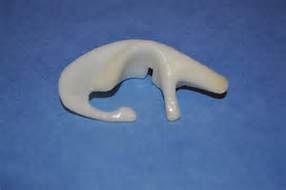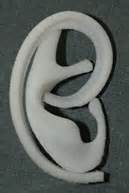Microtia is a congenital condition where all or major parts of the ear are missing. Two methods of microtia reconstruction have evolved using either one’s own ribs or through the use of a synthetic framework. Autologous microtia reconstruction is done to using portions of the cartilaginous #7, 8 and 9 ribs to create the base framework of the ear. Alloplastic microtia reconstruction uses a synthetic performed ear framework made of a Medpor material that is simultaneously covered by a vascularized temporal fascial flap. Such ear reconstructions are usually done around ages 6 to 8 years old.


While many rib graft microtia reconstructions need projection and a more rigid graft placed behind it, a synthetic framework often needs the opposite. The preformed framework provides good projection but at the expense of ear stiffness. The ear is made of flexible cartilage that springs in and out and that is a feature that a plastic material can not do.
Dr. Barry Eppley
Indianapolis, Indiana




